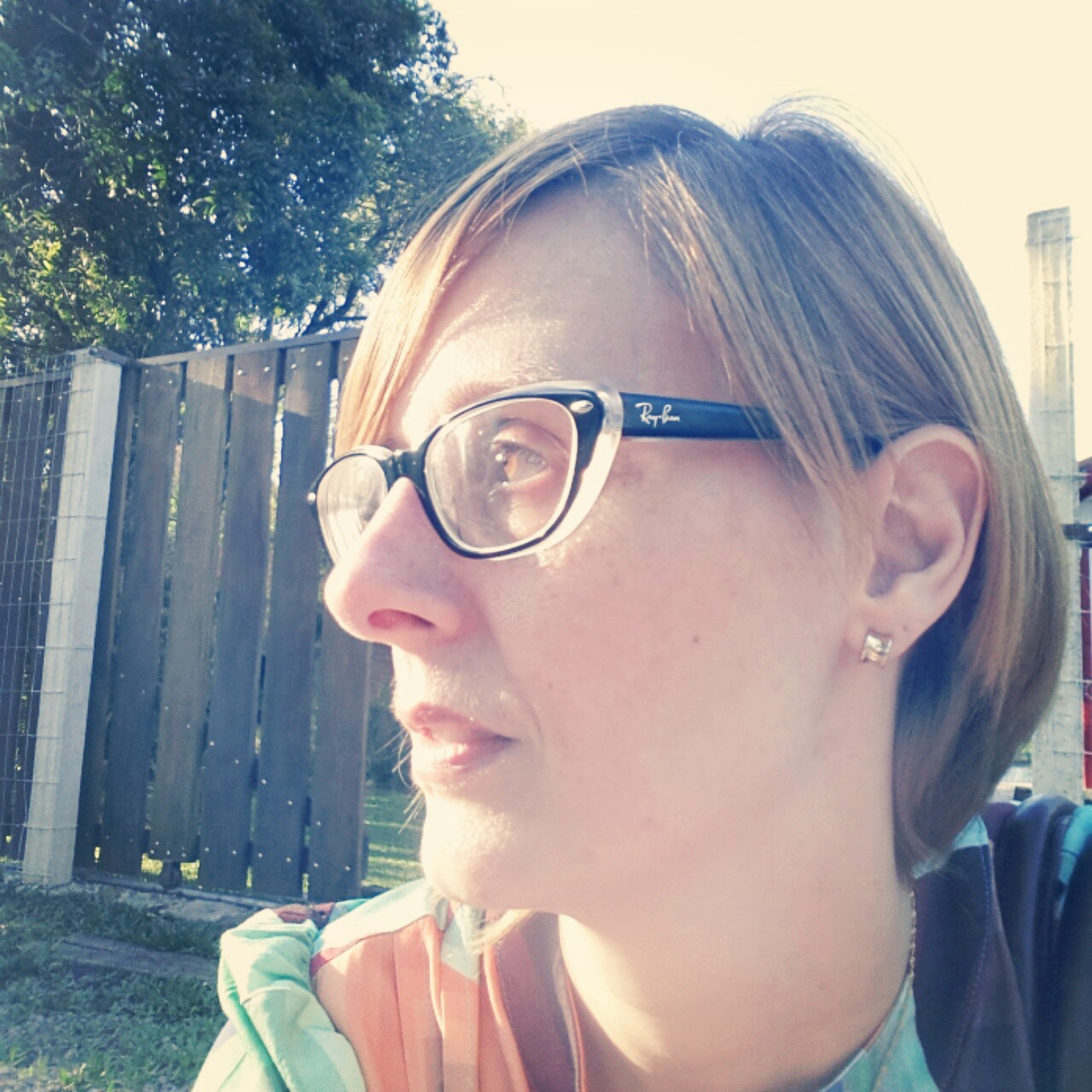My journey to becoming an e-moderator – Part I
Dear all,
From now on, I’ll write about my journey to becoming an e-moderator in order to reflect upon it. I realized the way online courses have evolved and my online teaching experiences intertwine. Thus, you’ll be able to accompany me in this journey to the past and to understanding what has been going on in this field for a while now.
…It all started back in 2002… The school where I used to teach started offering students some blended courses. At that time, we had some intensive training on it – we read about distance learning, online learning as well as blended learning and had lots of discussions about it all. Also, we got familiar with the platform students would use as we ourselves had to complete some of the courses and we had to use all the different tools the platform provided teachers and students with to get acquainted with them.
In these blended courses, students would have classes once or twice a week (a one-hour class twice a week or a two-hour class once a week) and they would have to work on the platform, as well. Thus, their course materials were a student’s book we used in class, a workbook for homework, and the units in the platform.
The units in the platform were the same units they had in their books. Therefore, they had to work on them to either get prepared for a class or to reinforce content from a previous class. The units in the platform had the same outcomes and the same syllabus as the ones in their book, and they followed the same teaching approach.
In relation to the activities, some activities in the platform were the same as the ones students had on their books whereas some of them were different. The ones which were different had the same content as other activities in their books, though. Most of them were vocabulary, grammar, listening and reading activities. Some of them were drag-and-drop, multiple choice, and unscrambling-the-sentences activities.
When I started teaching these blended courses, I had to make the connections myself, that is, I had to go over the units online and get to know what activities students would have to work on online for each activity in their book. I would give students a handout with an overview of the unit and so, students would know exactly what to do and when to do it. After a while, their books were updated and an icon was included so that students would know they were supposed to work on a specific activity online for that specific activity in their book. The icon was a book which looked like a smiling laptop.
Students had access to all units from the beginning of the course, that is, units were not revelead at the same time teachers started a new unit in class and they were not closed as soon as teachers finished them in class. However, students were suppposed to start working on a new unit as soon as we started a new unit in class and finish it at the same we finished working on it in class. That was not what really happened, though. Most students saw the activities in the platform as homework and they used to work on all units and activities at the end of the semester as their grade in the platform was part of their final grade, that is, their final grade in the platform was worth about 20% of their final grade in the course.
Here you can read a little about some of the tools we had in the platform…
- A messaging system: teachers and students were able to send messages to each other.
- Teachers and students were able to access a gradebook, which contained all the information on students’ performance – first attempts, final attempts, grades in each activity, average grades in each unit, and so on.
- Online teacher: most of the time, there was a teacher who was online and would help teachers and students whenever they needed. This teacher was not their face-to-face teacher.
- Bookmark: if you clicked on this icon, you would be taken straight to the last acvity you had worked on.
As I look back, I think the course did not have some very important tools which provide students with opportunities to work in groups, exchange ideas with their classmates, that is, build knowledge together such as forums, group work, wikis, etc. And bedides, I believe students would also profit a lot from working on some written assignments and from asynchronous and synchronous discussions.
I have started reading about blended learning recently and I’ve come across some very interesting articles on it. I’ll first go over some relevant concepts related to it and after that, I’ll use these concepts to analyse the course I’ve been talking about.
- Defitions of blended learning:
Graham (2006) says that “blended learning is the combination of instruction from two historically separate models of teaching and learning: traditional face-to-face learning systems and distributed learning systems” and he suggests that this definition “emphasizes the central role of computer-based technologies in blended learning”.
Badawy (2009) says that “blending learning aims at combining the advantages of both face-to-face and e-learning environments. In practice, blending learning offers the possibility to benefit from the supportive classroom direct interaction and the flexibility of online learning”. He also mentions that “blended learning is a flexible approach that combines face-to-face learning activities with online learning practices that allow both teachers and learners exchange collective and individual feedback synchronously and asynchronously”.
According to Hockly & Clandfield (2010), blended learning “refers to a mixture of both face-to-face and online learning – some elements of a course are delivered online, and some are delivered f2f” and “the ratio of online to f2f course delivery can vary greatly… from 100% online to any combination of f2f and online”.
And besides, Dudeney & Hockly (2007) say that blended learning “is a mixture of online and face-to-face delivery. For example, learners might meet once a week with a teacher face-to-face for an hour, and do a further two hours’ work weekly online”.
As I mentioned before, the course was a combination of face-to-face and online instructions. Students had classes once or twice a week and were supposed to work online, as well. We teachers provided students with feedback on their work online sending them messages in the platform and feedback on their overall performance in report cards. I do not remember providing students with collective feedback.
- Blending levels:
According to Graham (2006), blending can take place at four different levels – activity level, course level, program level, and institutional level. In this course, blending occured at the activity level which takes place when a learning activity has both face-to-face and classroom elements and at the course level which “entails a combination of distinct face-to-face and CM activities used as part of a course. Some blended approaches engage learners in different but supportive face-to-face and CM activities”.
- Categories of blended learning systems:
Graham (2006) describes three different categories of blended learning systems which are enabling blends, enhancing blends, and transforming blends. This specific blended course focused on enabling blends which “primarily focus on addressing issues of access and convenience—for example, blends that are intended to provide additional flexibility to the learners or blends that attempt to provide the same opportunities or learning experience but through a different modality” and enhancing blends which “allow incremental changes to the pedagogy but do not radically change the way teaching and learning occurs. This can occur at both ends of the spectrum. For example, in a traditional face-to-face learning environment, additional resources and perhaps some supplementary materials may be included online”.
The course did not focus on transforming blends at all. Transforming blends are “blends that allow a radical transformation of the pedagogy—for example, a change from a model where learners are just receivers of information to a model where learners actively construct knowledge through dynamic interactions. These types of blends enable intellectual activity that was not practically possible without the technology” (Graham, 2006).
All in all, it was a really good experience (my first one, in fact) and I really learned a lot from it…
Btw, I would love to hear from you and get to know about your first online teaching experience!
References:
- Badawi, Mohamed Farrag. (2009) Using Blended Learning for Enhancing EFL Prospective Teachers’ Pedagogical Knowledge and Performance. Available at https://files.eric.ed.gov/fulltext/ED504993.pdf.
- Dudeney, G. & Hockly, N. (2007). How to… teach English with Technology. Harlow: Pearson Education Limited.
- Graham, Charles R. (2006) Blended learning systems: Definition, current trends, and future directions, 3-21. In Handbook of blended learning: Global perspectives, local designs. Available at https://www.academia.edu/563281/Blended_learning_systems_Definition_current_trends_and_future_directions.
- Hockly, N. with Clandfield, L. (2010) Teaching Online: Tools and techniques, options and opportunities. Peaslake: Delta Publishing.




